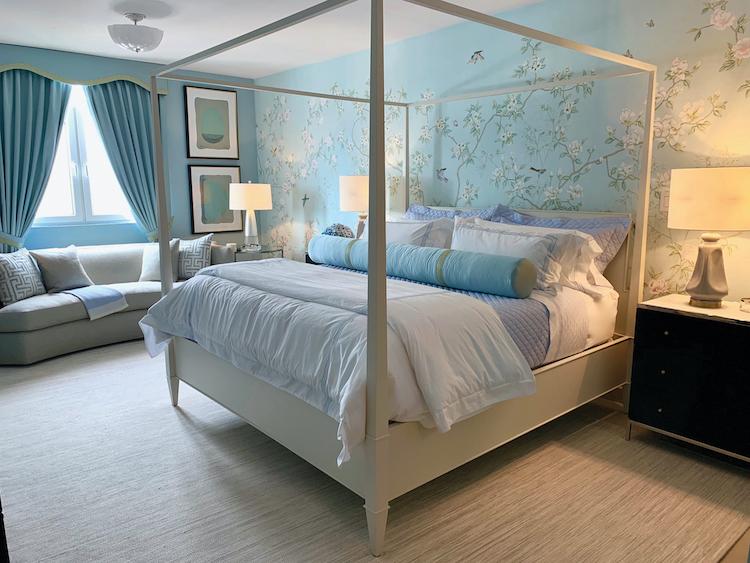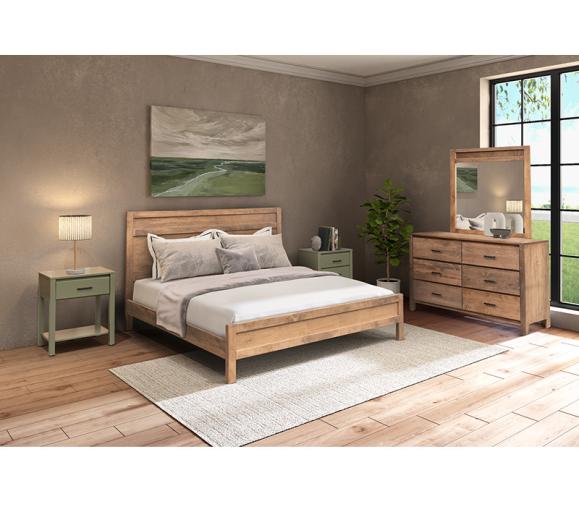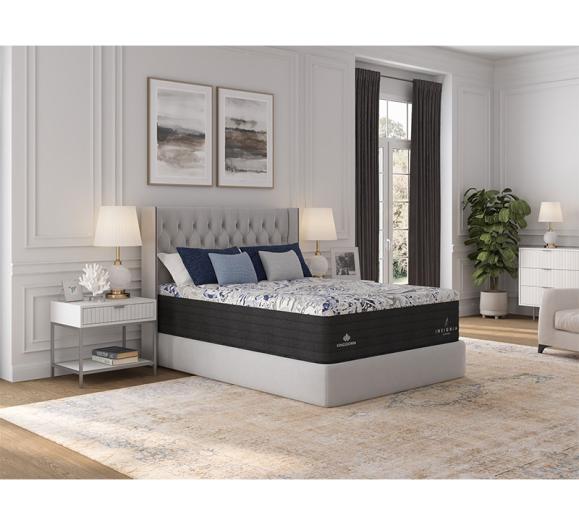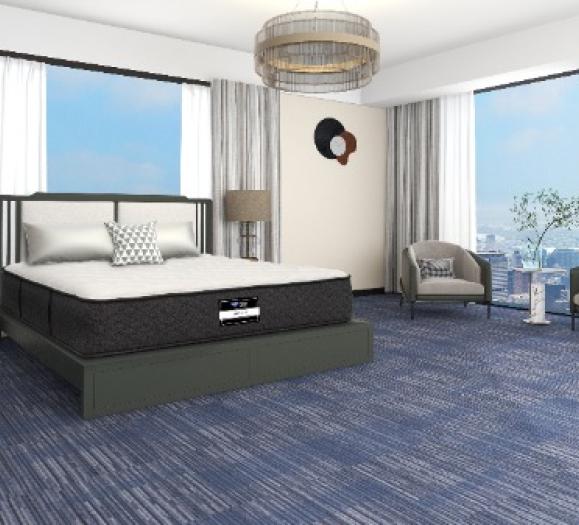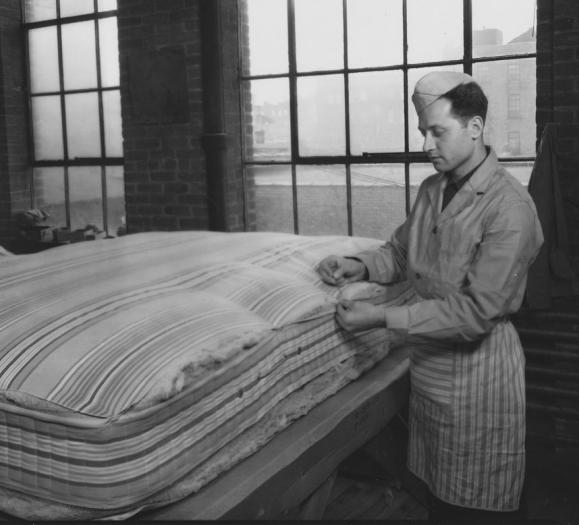Possibly the most personal room in the home, when it comes to designing bedrooms, there are logistics to consider, functionality to pay attention to and the personal taste of the client to take into account. This room should be a sanctuary in the home, designed for the purpose of escape, calm and, of course, sleep. The bedroom promotes wellness when done right, because rest and respite in a well-designed space can enhance life balance and good health. We spoke with three interior designers to learn what their focus and must-haves include when designing a bedroom that allows their clients to get a good night’s sleep and enjoy a space unique to them.
Space Psychology
“The bedroom is a place for resting and sleeping and being intimate in many different ways,” says Fernando Rodriguez, Co-owner of design firm Stewart-Rodriguez, which operates out of New York and Puerto Rico. When designing for a bedroom space, particularly a master suite, he adds, it’s important to incorporate the energy of the couple who will live in that space. “I become extremely intuitive of conversations between the couple when discussing this room in the home,” he says. “I take mental and physical notes when discussing what’s required in the bedroom so I can develop the perfect world for them.”
There are a number of key considerations to creating a sanctuary designed for all of the above, including types of furnishings, colors and a design aesthetic that will resonate with the client, which, in the case of a couple, as Rodriguez notes, may have to address different tastes and functionality for the people using that room.
For Shayla Copas, of Shayla Copas Interiors, in Little Rock, AR, she gets a feel for a client’s bedroom taste by asking about travels that have inspired them. “I have always said that a client’s bedroom should remind them of their favorite hotel suite,” Copas notes. “When designing a master suite, we talk about the client’s favorite hotels and what about those rooms made them feel comfortable and relaxed. We try to design their favorite ‘escape.’”
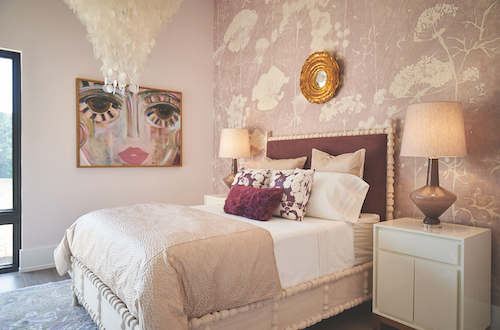
Understanding the client’s needs and getting that escape just right is essential out of the gate, adds interior designer Stephanie James, Co-owner of Allen and James Design, in High Point, NC. “A master bedroom is a bigger investment in the home,” she says. “It’s not something the clients will change out all the time, so they tend to spend more money.” For that reason, Allen and James focuses on a spa-like atmosphere in a master bedroom to ensure the design will resonate with the client for an extended period of time.
From Basics to Details
The design of a room often starts with a color palette, and in the bedroom, soothing colors are a focus for interior designers trying to fill the space with a sense of peace and wellness. “It’s important to pay attention to color psychology and a client’s personality when selecting the color for a master suite,” Copas says. For a high-strung client with lots of job stress, for example, she continues, she’ll choose greens or blues, as those are calming colors.

James adds that color is all about the client’s preferences. She personally prefers darker colors in her bedroom but many of her clients tend toward lighter, fresher spa-like palettes. She also likes to transition the paint colors from the bedroom to the master bath where applicable for a cohesive design.
While Rodriguez agrees that softer colors, such as creams and baby blues, are soothing and appropriate in the boudoir, he adds that this is also a space for texture. “I do like to use textures and wallpaper in a softer palette without heavy designs or patterns,” he says of bedrooms he designs. Soft underfoot is an important consideration as well, he continues, noting that area rugs in a bedroom should be soft and positioned where feet hit the floor in the morning.
While, as one would expect, the bed is the focal point in the bedroom, there are other furnishings and considerations to address when designing a sanctuary bedroom space, such as seating and storage. “I like to put lounge chairs in a couple’s bedroom so they can have conversations,” creating a space for communication, which might be less comfortable in a bed. “A bedroom should have intimate spaces for sleeping, resting and creating new energy.”
James agrees that an upholstery seating area in the bedroom is optimal. “There should be a place to read or get away from the kids,” she says, noting that it doesn’t have to be a large space. “If you don’t have the space, an extra chair or settee in the bedroom, or even a narrow bench to put feet up on and read a book will work.”
For Copas, a bench at the end of the bed or a settee serves double duty as well, as a place to relax, take shoes off or put throw pillows from the bed at night. She adds that to create that relaxing environment, she also uses blackout draperies in a bedroom. “This helps to prevent the sun from peeping through the drapes in the morning and and promotes a relaxing atmosphere. Relaxation is paramount to a well-designed master suite,” she says.
A relaxing room is also a well-organized room, according to James, who is partial to large, organized closets. She’ll also use oversized master chests as nightstands. “You want storage areas that keep people neater,” she says.
When it comes to the bed, designers tend to focus on top of bed and what surrounds the mattress for aesthetic.
From a technical perspective, both Rodriguez and James prefer a low-profile bed because it’s easier to get in and out of. It also creates good sightlines for beautiful bedding. As for the frame, James also says that a footboard, which can also be low profile, is essential for the stability of the bed.
While higher beds were once in vogue, Rodriguez also opts for lower-profile beds in today’s designs. “It’s easier to get up and lay down when you have a lower bed,” he notes. It’s also easier for the pets that many of his clients want to have access to their spaces.
Copas steers her customers toward adjustable beds. “Adjustable beds help to promote good sleep,” she says. “For example, I like a softer bed and my husband likes a firmer mattress.” Her recommendation is the Sleep Number bed to account for sleeping differences and to reduce such issues as a partner’s snoring.
Mattress aside, bedding is the showstopper in the room, say designers. “We want the pillows and headboard to show,” says James, noting that white sheeting with trim is her preference for her clients, along with a duvet coverlet at the end of the bed for an added cozy touch. She generally recommends at least a 420-thread count sateen for maximum comfort with trim that matches the palette of the room.
“Layering on a bed gives the room a welcoming feeling and makes one feel as if they want to stay,” adds Copas, who uses varied pillows and blankets to achieve a comfortable and inviting look. “I usually incorporate Euros, King shams and a bolster on the bed and finish off with a comfy throw.”
Good-quality fabrics are an essential part of a comfortable bed, Rodriguez notes. “It’s another element of good energy. Sleep is what keeps you elevated.” Attention to thread count, breathability, heat radiance and good pillow support helps him create comfortable sleeping spaces for his clients. “All of these things need to be taken into consideration so the space truly becomes a sanctuary,” he says.
The Elephant in the Room
Furnishings in a bedroom have to address the functionality clients expect beyond sleep. Possibly one of the more controversial design decisions in the bedroom is what to do with the television. While most designers would prefer to keep that technology out of the space, as it can disrupt design and sleep, many people watch TV in bed, so a television needs to be incorporated. The key is how to add this element for maximum comfort and within the flow of an aesthetic. To accomplish this, designers tend to focus on optimum placement and disguising the television when not in use.
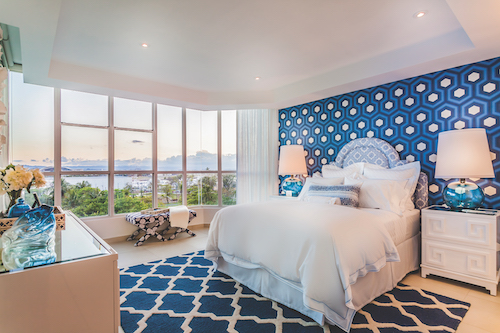
Rodriguez, for example, places the TV as far as possible from the bed. “If it’s too close, it can be more difficult to fall asleep because of the impact on the retina,” he says. Copas considers how her clients will be watching TV in bed and places the television in a way that will help them stay relaxed. “If they watch TV on their right side, then we will make sure the television is placed where they can easily lay on their right side,” she says.
When not in use, it’s best if the television fades into the design, designers agree. With flat-screen technology, that has become easier, but that big black box can still pose a challenge. “How do you camouflage the TV so it’s not as intrusive?” asks Rodriguez. It can be as simple as creating a casing for it so it’s not seen when not in use or putting a beautiful frame around it, he continues. James adds that a television can also be mirrored over when not in use, giving it added functionality.
Considering that bedrooms are rooms where much time is spent, whether sleeping or simply relaxing, it is a room where the client’s wellness plays a major role in design decisions. It’s imperative to pay close attention to the client’s needs and get to know how the room will function as well as adding a bit of romance for an extra cozy space. Attention to details such as television placement, light-blocking drapery, lamps and other light sources, and even plants — which clean the air in the room — are all elements for consideration.
In bedroom design, these should move beyond the master as well. “People tend to forget that guest bedrooms are also part of the house,” says James. “Wait and do that right, so it works with the design of the rest of the home.”



